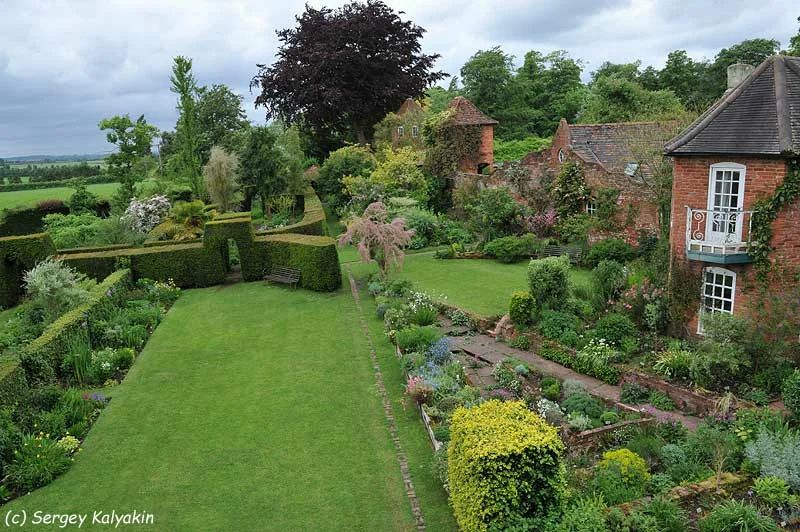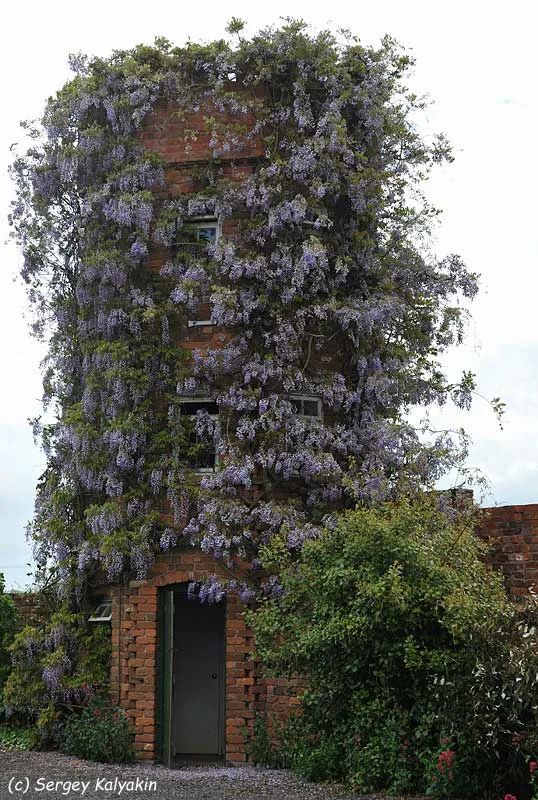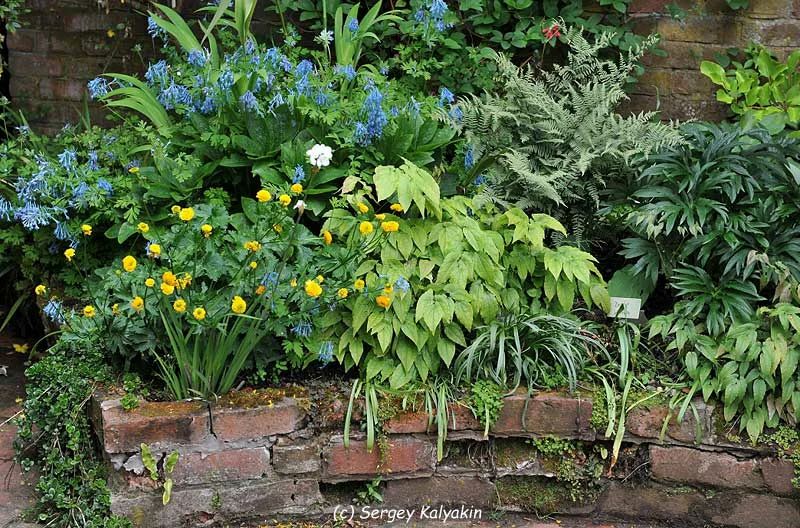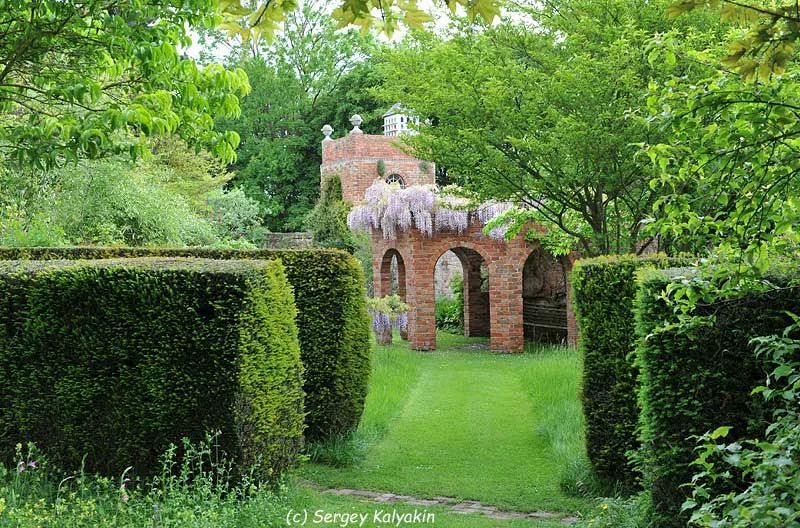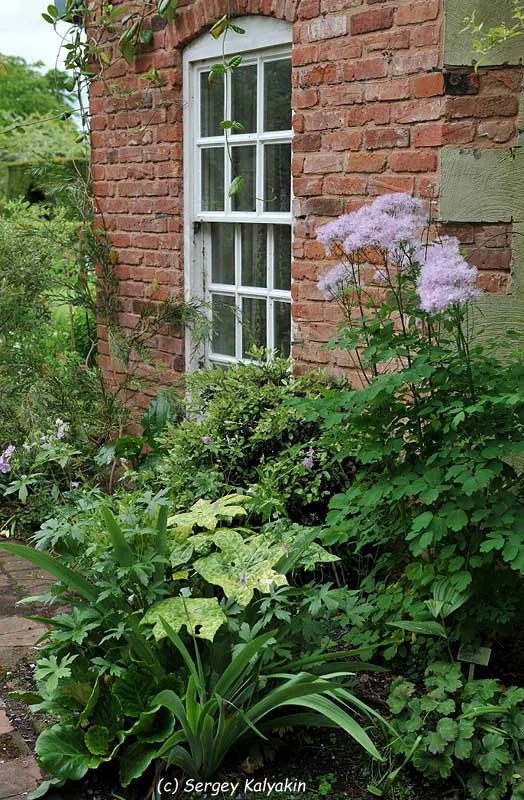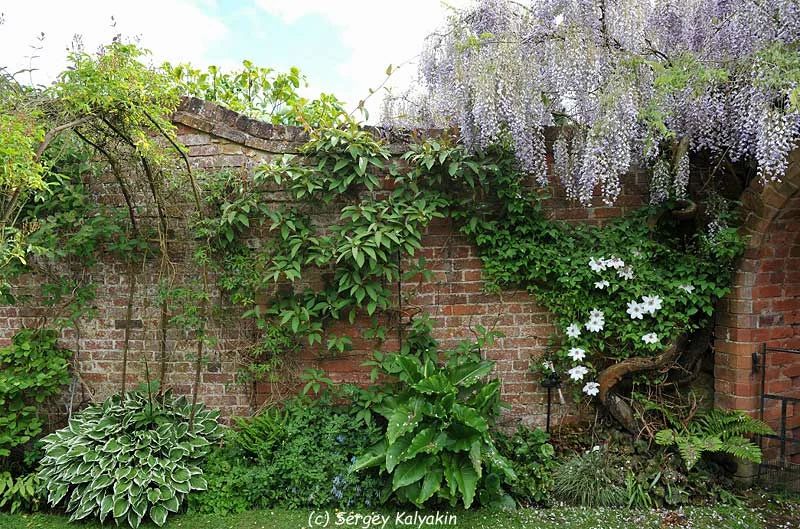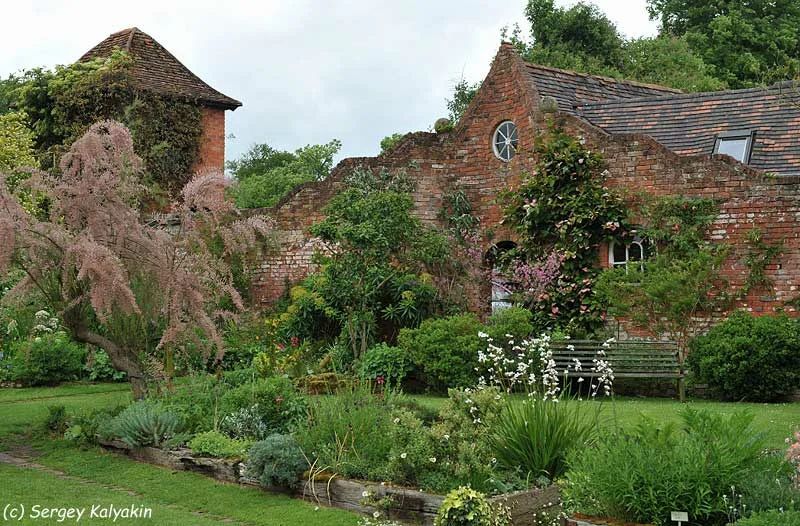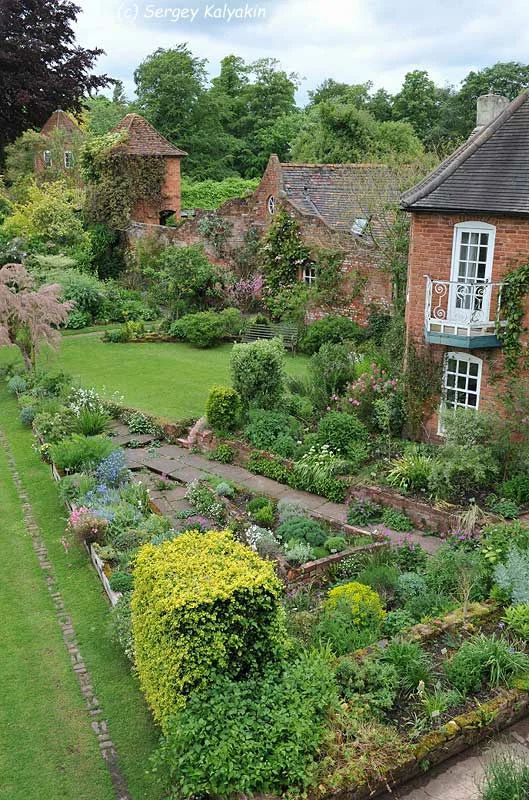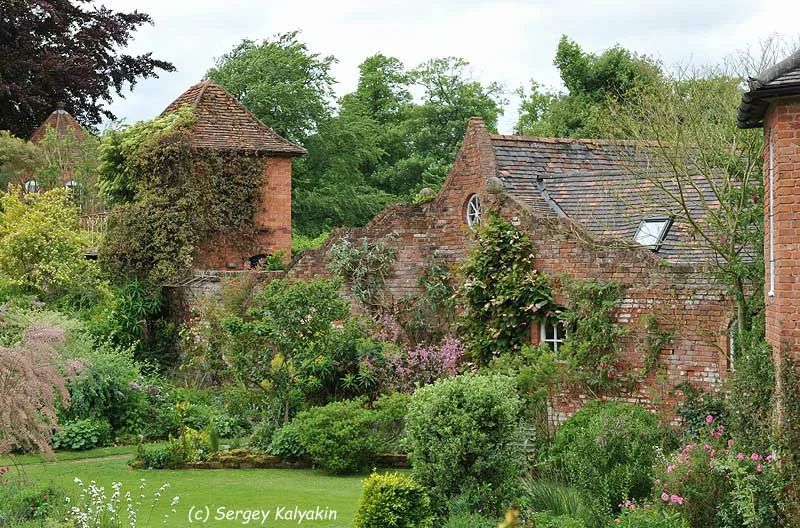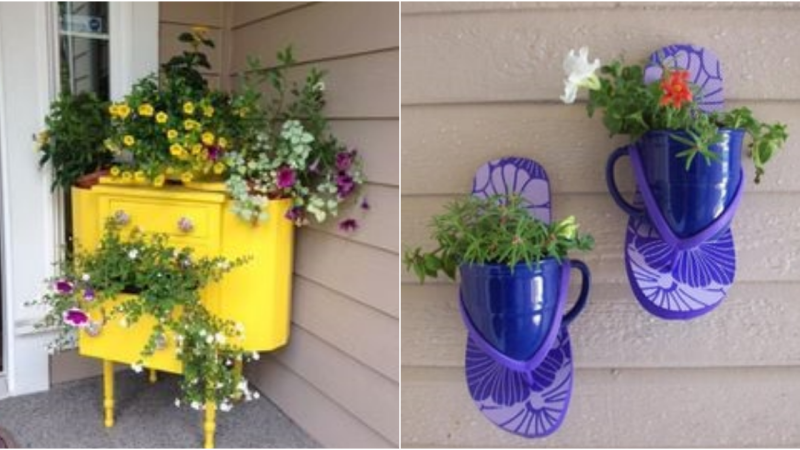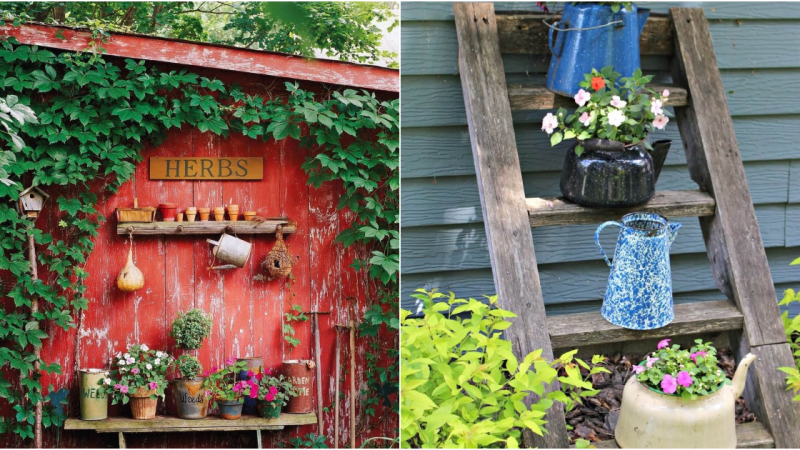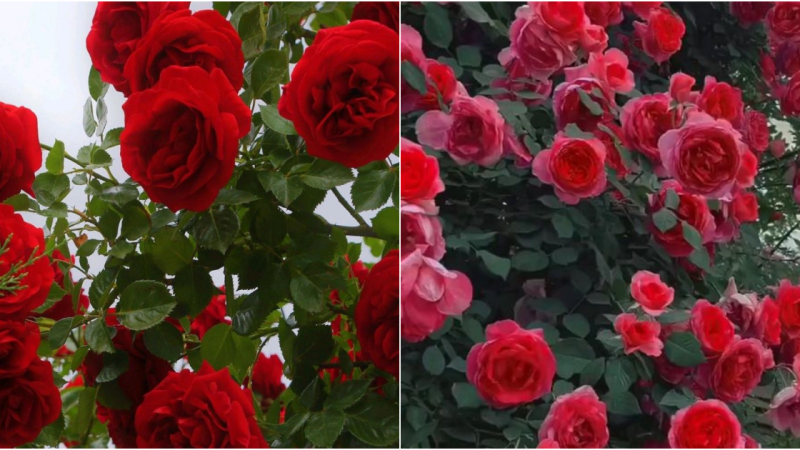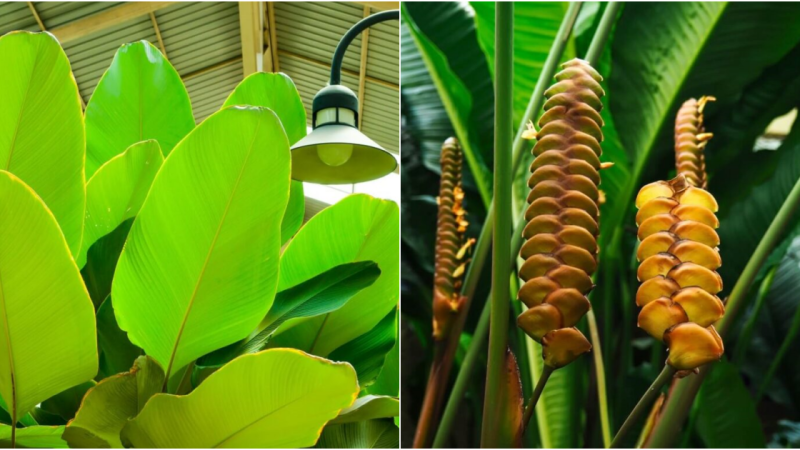English Garden Amidst Ruins
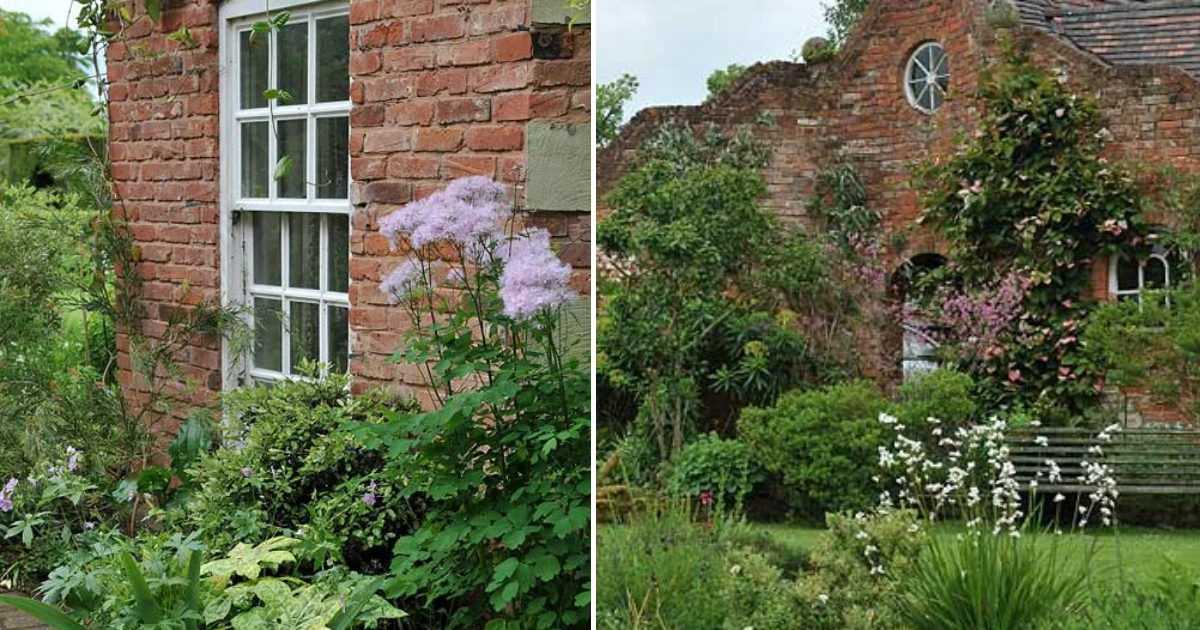
Many nurseries have demonstration gardens where visitors can see the use of plants in design and take note of striking combinations. Sometimes these show gardens are twice the size of the nursery itself, and Stone House Cottage Garden is just such a fortunate case.
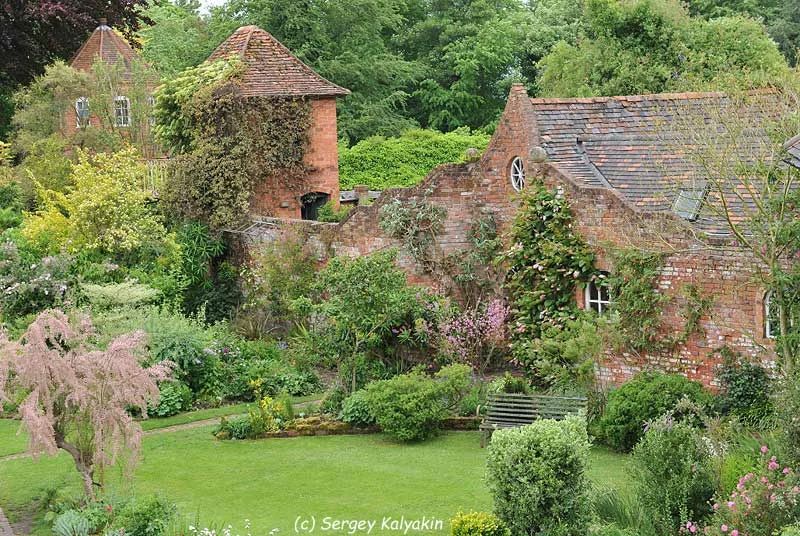
Louisa and James Arbutnott purchased the house and the abandoned garden surrounded by walls in 1974. The special charm that the garden possesses today is the result of James’s meticulous work and construction skills. He “inserted” several new buildings into the walls, including a couple of towers, giving the plot a “medieval” look (of course, as much as possible through the creation of artificial ruins).
There are no more architectural innovations planned at the moment, but the same cannot be said for the plants. Louisa continues to fill the garden with new rarities, using classic color schemes of English mixed borders.
A walled garden is a dream for any collector of climbers. The space at Stone House Cottage Garden is perfect for this purpose. Walls made of local stone and red bricks, about 3 meters high, allow for the placement of both climbers and some shaped shrubs.
The walls provide a special microclimate for the plants: heat on the sunny side and humid coolness on the shady side. The walls become a shelter for climbers and shrubs that are not very winter-hardy. The walls help shapeless plants find form and define the contours for pruning vigorous climbers. The walls serve as the best backdrop for decorative foliage and flowers. The walls in this garden are the foundation and life.
The nursery is located outside the garden walls, and its assortment is quite unique. The focus is on winter-hardy (and sometimes not very) woody and herbaceous plants of exotic origin, most of which cannot be found in English garden centers.
However, you can see them in all their glory in the garden, where they are carefully labeled. Louisa Arbutnott divides, propagates, and sows their seeds herself. This business doesn’t bring much money, but it brings the garden owner a lot of pleasure.
The garden cannot be called large; it occupies about thirty acres. However, at the entrance, three paths (also known as the three main vistas) and the living hedges that border them diverge in different directions, offering the traveler, as in a fairy tale, the choice to go right, left, or straight. These three main paths intersect with narrow pathways, and you can always turn and change direction… or get lost in one of the shady corners.
There are a great number of them in the garden, as one of Louisa’s favorite plant groups to collect is rare shade-loving perennials. As a result, the garden, divided by living hedges into several green rooms (each with its own microclimate), seems much larger than its actual size. And even if you have walked through it entirely and visited every corner, rest assured, there are still a few secluded spots that you haven’t seen.
Many of Louisa’s beloved perennials are woodland plants. They thrive in shade, can’t tolerate drought, and often grow quite slowly. The garden has enough shady corners and north-facing walls to accommodate all the whimsical ferns and precious trilliums, arisaemas, jeffersonias, corydalis, anemone nemorosas, and anemonopsis.
Many compact species grow well “at the feet” of shrubs and climbers. Louisa efficiently and effectively utilizes the garden space. Another example of her inventive “plant management” is to let low-growing and non-aggressive climbers grow on shrubs, using the same space twice.
In front of the house, where the former greenhouse used to be, raised beds with borders made of old railway sleepers are now located. They provide excellent drainage for various small-bulbed plants, drought-tolerant evergreen shrubs with a Mediterranean appearance and alpine plants.
Here, near the house, Louisa has assembled a collection of different species of her favorite shrub, the indigofera (Indigofera) of the Legume family. Not all of them are hardy in the local climate, and late frosts can damage the shoots that have already grown. But, as they say, homes and walls help protect against spring weather adversities. Moreover, even if the bushes freeze, they regrow and bloom abundantly.
Frosts in the area where Stone House Cottage Garden is located can occur even in May, so Louisa tries to select plants that can withstand temperature fluctuations without harm. For example, among all magnolias, she chose Magnolia wilsonii because this species blooms later than the others. Unlike early-blooming magnolias, whose flowers turn into droopy brown “rags” in light frosts, Magnolia wilsonii always looks brilliant.
